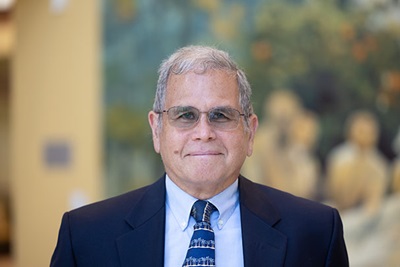
Statement of Personal Qualifications
I currently hold the ASCE Fellow grade and am a Board Certified Environmental Engineer. On leadership experience within ASCE, I am currently Vice Chair of the Irrigation and Drainage Council, and Chief Editor of the ASCE Journal of Irrigation and Drainage Engineering. In past ASCE service, I have represented ASCE as a Commissioner on the Engineering Accreditation Commission of ABET. Currently, I am serving as the 2025 President of the American Academy of Environmental Engineers and Scientists (AAEES) and Chair the Education Committee of AAEES. In academic leadership, I am currently the Chi Epsilon (Civil Engineering Honor Society) District Councilor for the Southeastern United States, Co-Chair of the National Council of Tau Chi Alpha (Environmental Engineering Honor Society). At the local level, I am the past Chairman of the Department of Civil, Architectural, and Environmental Engineering at the University of Miami, and my current position is Professor of Civil and Environmental Engineering in the Department of Chemical, Environmental, and Materials Engineering at the University of Miami. I have worked in practice as a hydropower engineer for Harza Engineering Company (now Stantec), and as a Project Chief for the United States Geological Survey. My academic credentials are Ph.D. (Georgia Tech), MS (Caltech), and B.Sc. (UWI), all degrees in civil engineering; I am a P.E. in the state of Florida. I have written three textbooks on in both Environmental Engineering and Water Resources Engineering. On ASCE Awards, I have received the Collingwood Prize and the Rudolph Hering Medal. I have volunteered in the local community, having served 17 years on the Miami-Dade Environmental Quality Control Board.
Vision for EWRI
My goal is to elevate the national and international profile of EWRI on technical issues of importance to the profession of civil engineering, particularly in the specialty areas of environmental engineering and water-resources engineering, as well as the combined specialty area. This goal would be accomplished through 1) an increased focus on key areas of current and future practice, 2) increased collaboration with cognate societies, and 3) increased engagement with practitioners and academics. Some specifics in support of these objectives will be mentioned here. Board certification is becoming a more high-profile professional credential, and EWRI will need to provide a pathway for its members to become board certified in environmental engineering; this can be achieved by increased collaboration with AAEES. The technology used in our field is rapidly evolving, particularly in areas related to the application of artificial intelligence (AI) and drone-assisted capabilities. EWRI needs to take a leadership role in identifying the appropriate roles of various state-of-the-art tools that are now an integral part of our profession; this can be done by establishing a new technical committee on the application of state-of-the-art tools in environmental and water-resources engineering---this committee could engage with reputable vendors, engage with academics and practitioners that actively work with these technologies, organize high-profile biannual conferences, and/or generate biannual reports that are disseminated by EWRI. A third strategic area is for EWRI to solidify its presence in environmental engineering subspecialties areas beyond the environmental-water nexus. Increased engagement in areas such as air pollution, soil remediation, and solid waste management are examples; this increased presence can be achieved through collaborations with cognate societies such as AAEES and SWANA. If elected to the EWRI governing board, I would champion the initiatives and would also be open to supporting other forward looking initiatives approved by the board.

